by Molly Jameson | Jun 21, 2018
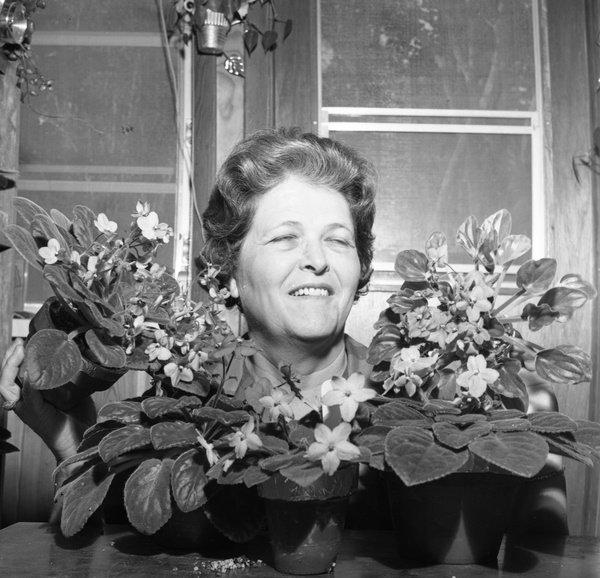
Mrs. Henry C. Mills in 1966 with her African violets at the North Florida Fair
flower show. Photo by Dan Stainer/State Archives of Florida.
Growing up, as soon as I entered the fair gates, I always headed straight for the rides. If I was lucky, I was able to get an unlimited pass strapped around my wrist and didn’t need to worry about rationing any tickets. Although I usually didn’t remember the names of particular rides – they were clear in my imagination. The spaceship, the circular mini roller coaster, the alien arms… and of course, the Ferris wheel. It wasn’t until I was about a dozen rides in – and starting to feel a little queasy – that the fun houses and win-a-goldfish-by-throwing-a-ring or shoot-a-basketball-for-a-giant-stuffed-tiger games drew my attention. After that, I was ready for funnel cake. Maybe even a corn dog and an assortment of fried cheese, pickles, and the like. Inevitably, I would eat too much and be out of commission for any more rides I was hoping to squeeze in – or squeeze into! This is when I might finally make my rounds through one or two of the giant warehouse-looking buildings that lined the way to the exits, where I knew there was at least a llama or a goat to be fed at the petting zoo.

Instead of simply attending the North Florida Fair this year, submit your garden’s best for competition. Photo by North Florida Fair.
But when I started volunteering at the Leon County Animal Shelter as part of the 4-H Pet Partners at age 12, I was introduced to these buildings in a whole new light. We were assigned the task of creating papier-mâché cats and dogs to display at the fair to help build awareness of pet overpopulation. I remember my dog well – he was beagle-like, with long droopy paper ears and stiff pointy legs that I struggled to keep balanced. The day we went to set up our display, my adrenaline soared, as I knew our creations were to be judged and ribbons to be bestowed. Ever since, I no longer view the fair buildings as a last stop – rather, I relish my stroll through each of them, as they contain so many handmade treasures, many of which are adorned with blue rosettes of triumph.
The tradition of displaying and competing for the best quality handiworks at the fair goes all the way back to the Middle Ages and Renaissance, where merchants sold and traded agricultural goods that had been grown over the summer and freshly harvested in the fall. Naturally, competitions arose during these times, as they strove for the finest products.
Today, fairs reflect the personality of an area, and nearly universally include judges who inspect home grown fruits and vegetables, flowers, preserved foods, and baked goods entered into competition by the community. The North Florida Fair awards about $80,000 in cash prizes to citizens who create and grow various items. Anyone living within the 24 counties that comprise North Florida – from the Suwannee, west to the Alabama line – is eligible to enter as many of the exhibit categories as they would like.

A youth showcasing his prize winning chicken at the North Florida Fair. Photo by Aly Donovan.
The exhibits are arranged into various departments, such as Home Agriculture, Capital City Garden Club Flower Show, Poultry, Baked Goods, and Fine Arts and Crafts. Within each department, there are various classes that are split into certain age divisions (i.e., youth only) or experience levels (i.e., amateur vs. professional). Under the Home Agriculture department there are 42 classes, including 13 classes covering fresh vegetables. The Capital City Garden Club Flower Show department has 13 classes, including annuals, perennials, hanging baskets, fruiting shrubs, trees, and vines, succulents, and much more. If you would like to submit something you’ve grown, now is the time to begin planning, as this year’s fair is set for November 8-18.
All of the details for each department and class can be found on the North Florida Fair website (http://northfloridafair.com/), under the Exhibitors tab. Pay close attention to the application and submittal deadlines for each specific category, as most items are due for judging the week prior to the fair opening.
So, let nostalgia win you over as you prepare your home-grown vegetables and flowers for submittal to the North Florida Fair. You might just earn a blue ribbon to be displayed for all fair attendees to admire, either as they walk off a full stomach in preparation for more rides, on their way to the exits, or just as they get started creating their own fond fair memories.
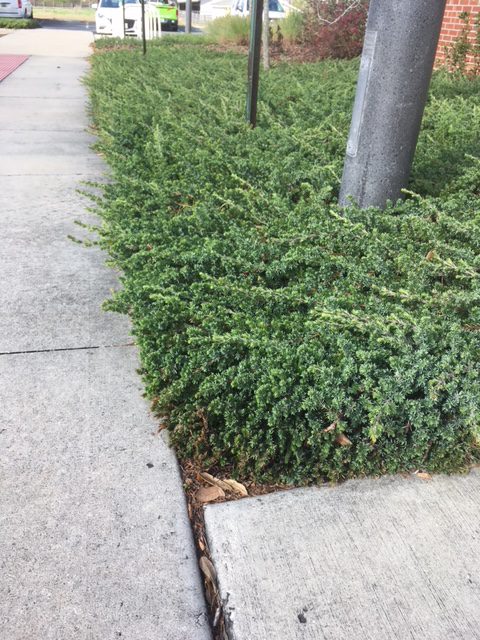
by Julie McConnell | Mar 13, 2018
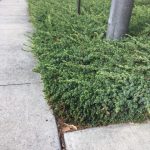
Shore juniper forms a thick groundcover and tolerates hot, dry sites. Photo: J_McConnell, UF/IFAS
We all know that when you have bare ground in Florida, eventually something unwanted moves in or the soil moves out. To avoid either of these negative outcomes, a good practice is to grow robust vegetative groundcovers, especially if the soil slopes and is at high risk of eroding. Turfgrass is one option, but what if you don’t enjoy caring for a lawn or the site is difficult to maintain or even unsafe to mow? An often overlooked option in our area is Shore Juniper Juniperus conferta.
Although some people find this plant less than exciting, its easy to explain why it can be a good option in certain situations.
- Easy to find at nurseries
- Inexpensive
- Low water requirements once established (you’ll need to turn the irrigation off on these!)
- Salt tolerant
- Evergreen
- Cold tolerant
- Low, spreading growth habit (won’t block view)
- Do not require pruning (junipers cannot tolerate heavy pruning!)
A common cultivar of shore juniper is Blue Pacific Juniper which grows to be about one foot tall but spreads two to three feet wide. The new foliage has a blue cast that gives it the common name. It creeps along the ground and will provide good ground cover to sloping sites. This plant should be planted on 3 foot centers so they have room to expand without crowding. Plant in well-drained soil and apply two inches of mulch on bare soil between plants to reduce weeds while the plants are filling in. Only water until established, then stop automated irrigation and only water as needed. Read more at Establishing Shrubs Florida Landscapes.
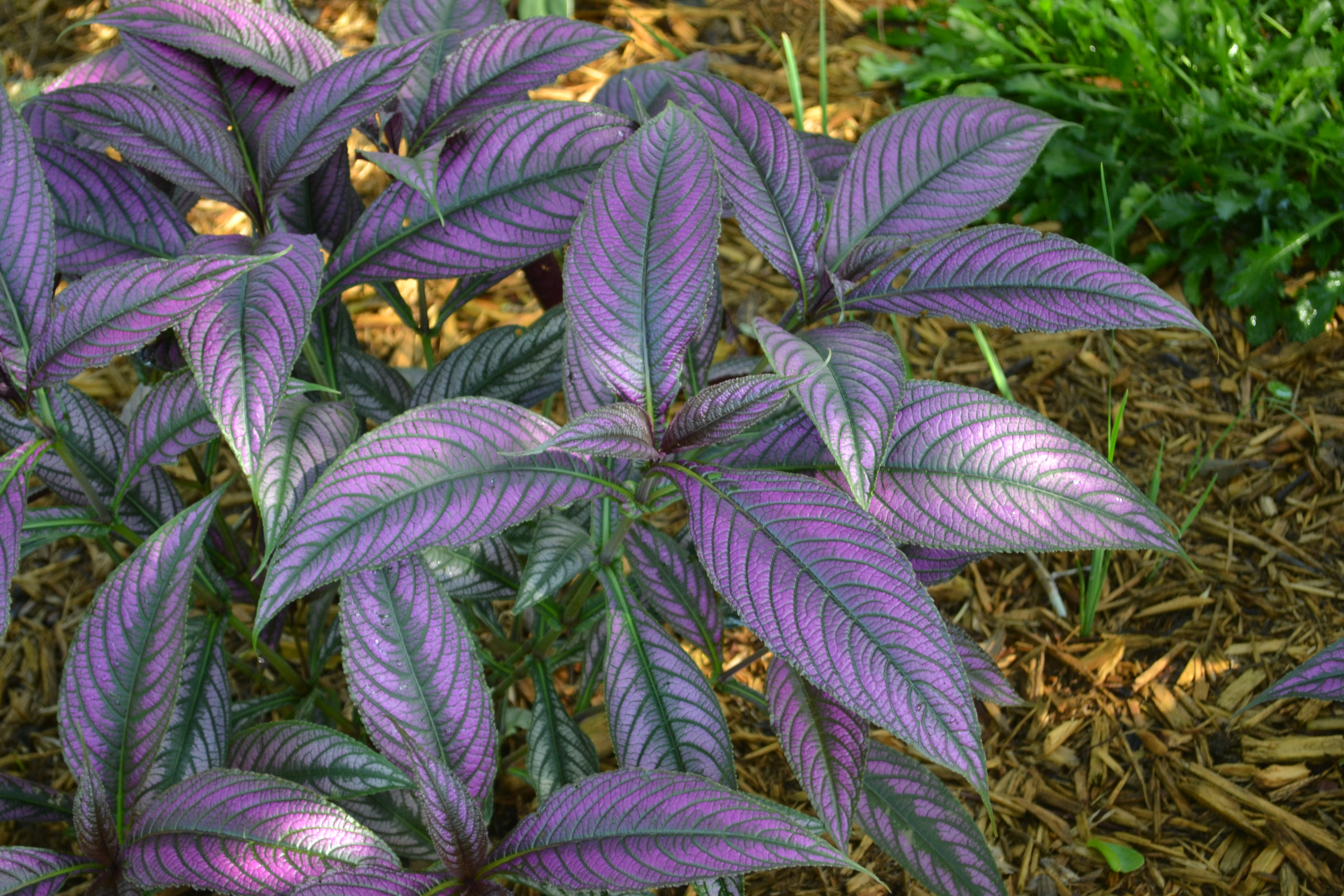
by Beth Bolles | Feb 26, 2018
Many landscapes have areas with tree canopies that lend themselves to becoming an attractive low maintenance garden area. Too often we may try to fight our shade by growing turf or pruning trees to allow more sunlight. The low maintenance approach can be to enhance your shaded area with plants and features that are both adaptable to low light and offer seasonal interest.
There are a variety of plants that perform well in the shade of a tree canopy, including evergreens, flowering perennials, and groundcovers. A key to remember is to make sure soil moisture matches the plant you choose. Tree roots will compete with plants you install so supplemental irrigation may be needed during periods when rainfall is lacking. Another consideration is that tree root systems may prevent a lot of digging for establishment so choose plants that may spread out on their own from the main plants. A few examples include Netted chain fern, Toadlily, Chinese ground orchid, and Raspberry vine. Adding specimens in containers for difficult to dig sites is also an option.
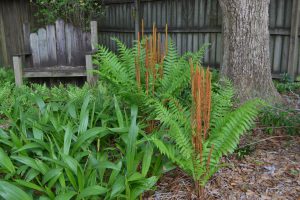
Under a tree canopy can be a low maintenance area. Ground orchids, cinnamon fern, and toadlily enhance a seated area. Photo by Beth Bolles, UF IFAS Extension Escambia County
Today’s plant options for shade are quite large. Below are just a few to consider.
Japanese fatsia is a large tropical looking evergreen that is very cold hardy. Attractive white flowers brighten the winter landscape.
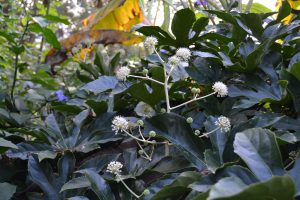
White flowers in winter are a bonus to enhance the large evergreen leaves of Fatsia. Photo by Beth Bolles, UF IFAS Extension Escambia County
Mountain snow pieris is a newer nursery offering with small white flowers during winter. Plants will need some moisture during warmer months.
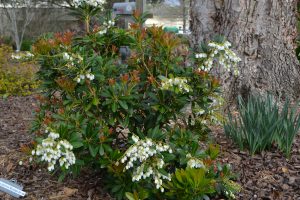
White blooms of Mountain Snow pieris in winter brighten an area. Photo by Beth Bolles, UF IFAS Extension Escambia County
Persian shield offers iridescent purple and silver foliage during warmer months. This plants would be considered an annual in most landscapes.
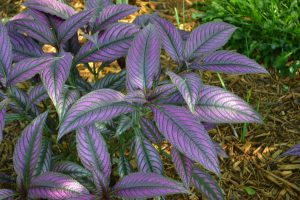
Even though it is an annual in most gardens, Persian shield brightens any shady spot. Photo by Beth Bolles, UF IFAS Extension Escambia County
The added benefit of landscaping under trees is that you have a natural self mulching area. You may need to dress up a few areas with additional mulch or redistribute leaves every so often so they don’t become to thick around plants. For more ideas on shade tolerant plants, visit the Escambia County Demonstration Gardens, 3740 Stefani Road, Cantonment, FL.
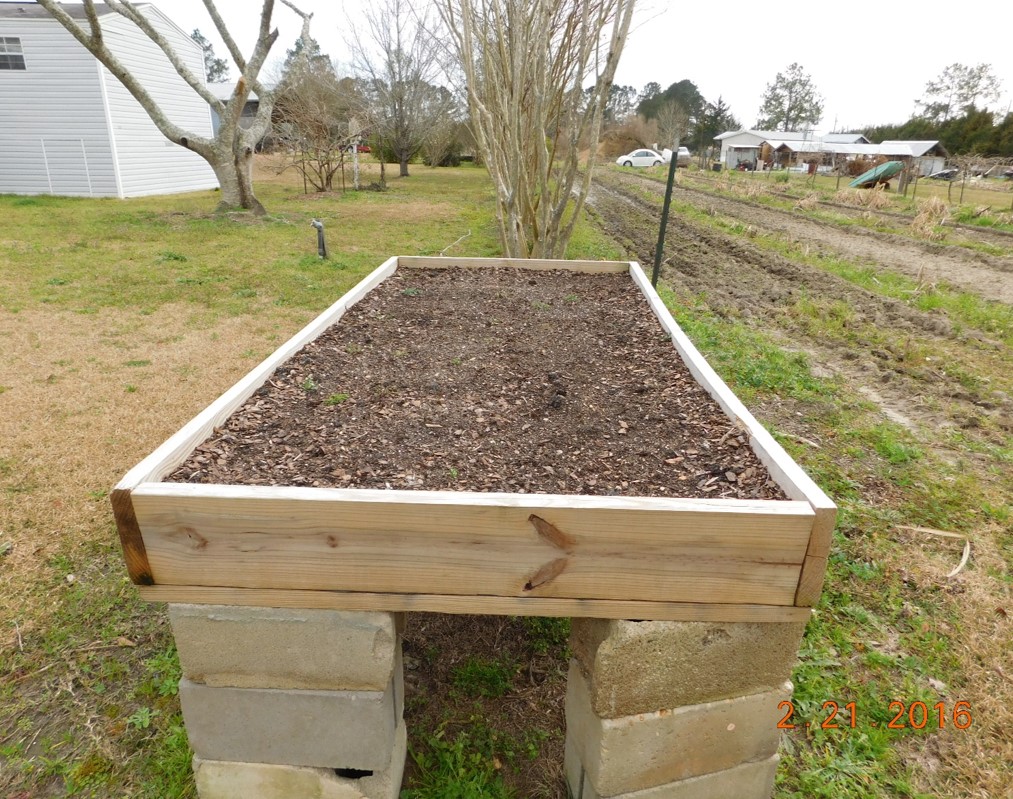
by Daniel J. Leonard | Oct 10, 2017
I had to do a hard thing last week. My battle-worn okra, eggplant and pepper plants that had produced so reliably since June and endured all the summertime challenges (heat, insects, disease, and a hurricane to name a few) were finally pulled out of my raised bed garden and discarded. A combination of lowered yields, increased insect pressure, and the fact that one can only eat so much okra in a calendar year sealed their fate.
However, before planting our cool-season veggie favorites, like those tender leafy greens and wonderfully crunchy carrots, there are a few things to do to get our raised beds in shape to give maximum yield performance and make growing a little easier.

Replenish the Soil
One of the main benefits of raised beds is the ability to grow in near-perfect soil conditions. If I was relegated to gardening in my yard’s less than ideal native sandy soil, I might have given up altogether by now and I suspect many of you would be in the same boat. Raised beds totally alleviate this problem and give gardeners the opportunity to grow in rich, fertile soil composed of your favorite homemade soil mixture (mine is two parts mushroom compost to one part aged pine bark) or commercial potting mix/compost. However, at the end of each growing season, you will notice you have a bit less soil in your beds than you did at the beginning. While frustrating, this is a natural process for soils rich in organic material – they naturally break down and decompose! So to give your veggies’ roots the maximum amount of growing space for the coming season, top off your beds with a quality soil/compost mix and till it in before sowing seed or setting out transplants.
Eliminate Competing Roots
If you have a mature tree anywhere near your raised bed garden, you are going to be in for a surprise when you till that new compost in! It turns out that tree roots like that rich, fertile raised bed soil just as much as vegetables do and will seek it out. It is not uncommon for mature trees to have root systems that stretch horizontally two to three times the height of the tree, meaning a 50’ oak tree could have roots growing well over a hundred feet away from its trunk! Therefore, unless you have a totally tree-free property, battling tree roots in your beds will be an ongoing issue. For instance, each fall, when I transition from warm season to cool season crops, I find that my neighbor’s Laurel Oak has filled all three of my raised beds full of feeder roots glad to be free of the infertile sand. This is a problem because those roots suck up vital water and nutrients meant for my vegetable crops, robbing them of reaching their full potential. It is good practice to thoroughly till your beds’ soil and remove as many of the competing roots as you can. Doing so will give your new plants a head start on becoming established before the competition returns.
Depleted soil and competition from tree roots are two of the biggest threats to your raised bed’s performance. By planning ahead and accounting for both of these things prior to planting your fall garden, you will be more likely to reap a larger yields when harvest time comes! For more information on raised bed vegetable gardening and other horticultural questions, contact your local UF/IFAS Extension Office. Happy fall gardening!
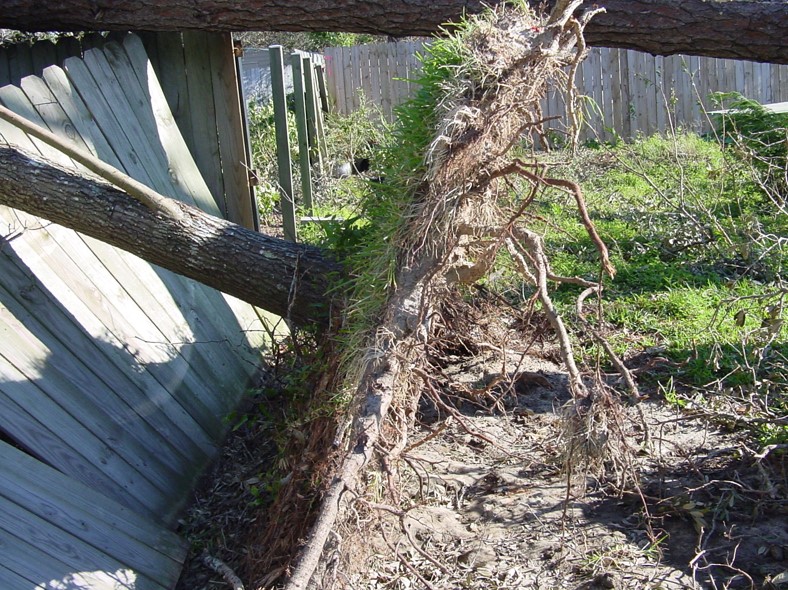
by Carrie Stevenson | Sep 8, 2017
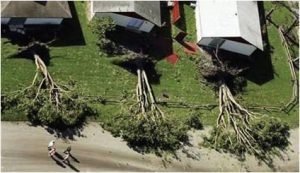
Trees are often among the first victims of hurricane-force winds. Photo credit: Mary Duryea, University of Florida.
Well, it is the peak of hurricane season (June 1-November 30), and this one is proving to be no joke. After having all summer to heat up, Gulf and Atlantic water temperatures peak in late August-mid September, feeding storms’ strength. Legendary hurricanes like Harvey, Katrina, and Andrew all made landfall during this time of year. The models for Irma show likely impacts in Florida, and due to its extreme size, most of the state is in line to endure heavy rain and wind regardless of location.
From a landscaping perspective, hurricanes can be truly disastrous. I will never forget returning home after evacuating from Hurricane Ivan and realizing all the leaves had been blown from nearly every tree in town. Mid-September suddenly looked like the dead of winter. A Category 3 storm when it landed near the southwest corner of Escambia County, Ivan was responsible for a 40% loss of tree canopy in our county.
Even if the Panhandle is not directly impacted by a storm, it is always smart to prepare. Research conducted by University of Florida arborists and horticultural specialists have yielded some practical suggestions.
To evaluate trees for potential hazards;
- Know your tree species and whether they are prone to decay or wind damage (more below).
- Look for root or branch rot—usually indicated by very dark spots on the bark.
- Tree structure—is there a single, dominant central trunk? Are branches attached to the trunk in a U-shape (strong) or V-shape (weak)?
- Smart pruning—never “top” (cut the tops from trees) but instead prune crowded limbs and remove limbs that are dead, dying, or hanging above power lines.
As for species selection, keep in mind that pines generally do not perform well in gale-force winds. Longleaf pines are quite strong, but common slash pines often snap or lean in storms. Even if a pine tree survives, it can be vulnerable to damage or death from pine bark beetles. It is wise to monitor pines for up to 2 years after a storm.
In addition, a survey conducted throughout the southeastern United States after hurricanes from 1992-2005 yielded important information on the most (and least) wind-resistant tree species. Live oaks and Southern magnolias topped the list, while pecans and cherry laurels performed poorly. This full, user-friendly report from the study is a useful tool.
For more hurricane preparedness information, visit the UF IFAS Extension Disaster Manual online or contact your local Extension office or Emergency Management agency.
by Matt Lollar | Aug 25, 2017
If you’ve attended any of our landscaping classes, then you’ve probably heard the phrase “Right Plant, Right Place”. This phrase is a simple reminder to research plant growth habits and growing conditions before making selections for your landscape. This not only holds true for ornamental plants, but for edible crops as well. A term used to describe the use of edibles as ornamentals is “Permaculture”. Now this is an extremely simplified definition of the term, but permaculture comes from a combination of the words “permanent” and “agriculture”. The thought behind permaculture is to fashion an edible landscape after a natural ecosystem.
There are a number of strategies to becoming a successful permaculturist. Below you will find a few examples.
- Site Observation and Analysis – The slope, orientation to the sun, and sectors of your yard should all be documented.
- Slope – Identifying the slope of your yard can help you determine the natural flow of water and nutrients. For example, if you have a hill in your back yard you may want to install some plant beds between the peak of the slope and your house. These beds will help absorb water and nutrients before they have a chance to reach the house.
- Orientation – Think about the location, relevant to your house, of each of your edible landscape areas. The eastern side of your house receives morning sunlight, which is much cooler than the western side of your house that receives sunlight in the afternoon. A tomato plant will be much happier if it can avoid the afternoon heat.
- Sectors – While walking your property, you will notice differences in soil texture, soil moisture, and the plants and weeds growing in these different areas. You can divide your yard based on these characteristics along with slope, orientation, and shade percentage to develop sectors of your property.
 Cover Crops and Living Mulch – Cover crops are planted in areas that you would normally allow to go fallow. Living mulches are plants that are planted alongside edible plants to help fill voids. The benefits of both are listed below.
Cover Crops and Living Mulch – Cover crops are planted in areas that you would normally allow to go fallow. Living mulches are plants that are planted alongside edible plants to help fill voids. The benefits of both are listed below.
- Weed Supression
- Erosion Control
- Produce and/or Scavenge Nutrients
- Nematode Supression
- Harbor Beneficial Insects
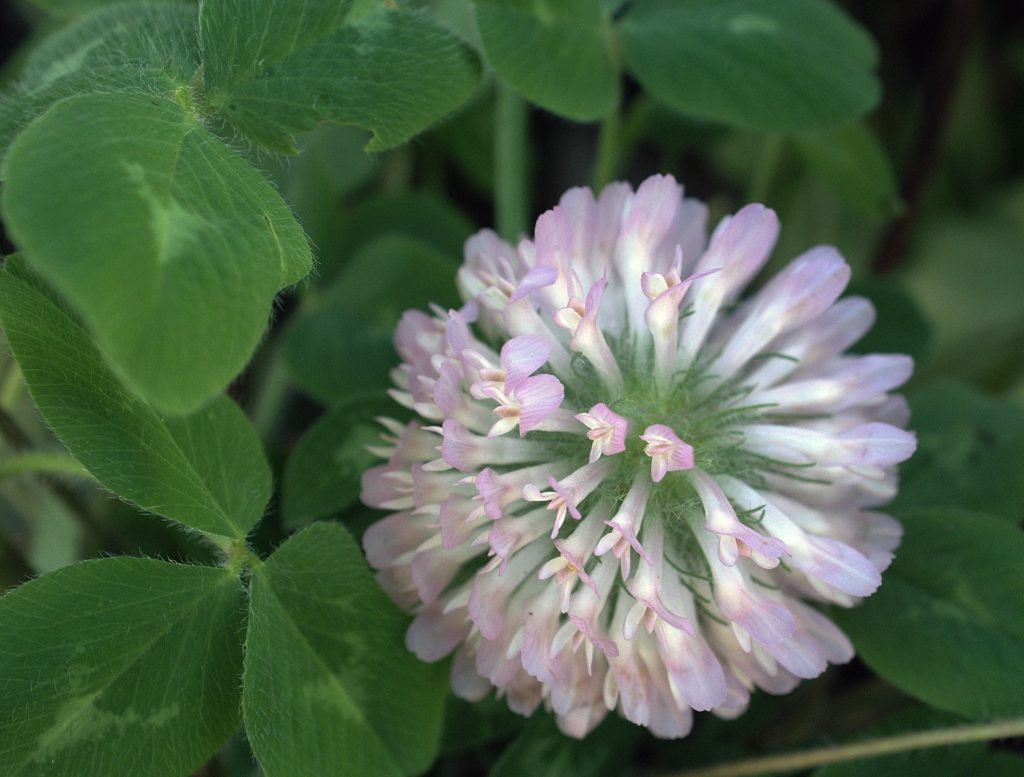
Clover is an excellent cover crop choice and has a beautiful flower. Photo Credit: University of Florida/IFAS.
- Space Utilization – The third criteria is to mimic a forest. Just like any good forest, your “forest garden” will consist of different layers of vegetation.
- You can start by planting large deciduous trees such as pecans or pears farthest from the house. These trees will allow filtered light to penetrate the layer below.
- Next, you can plant smaller fruit trees such as citrus or peaches along the understory of the larger trees.
- Then, you can plant your vegetable and herb garden around your fruit tree plantings.
- Finish by planting root and vining vegetables such as carrots or sweet potatoes at the edge of the forest.
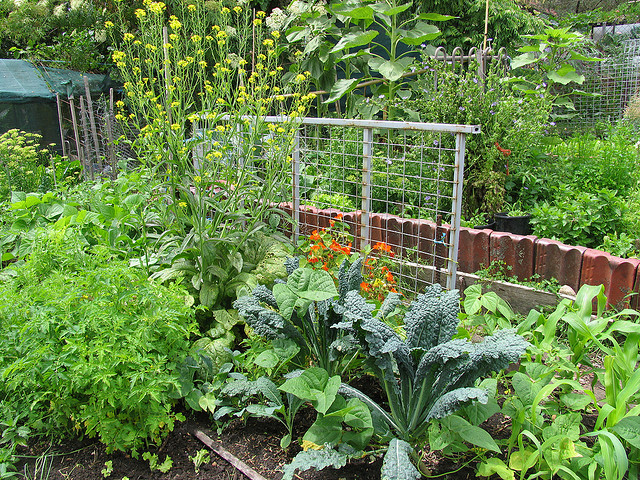
A mixed vegetable garden. Photo Credit: eXtension.org.
We’ve just scratched the surface of the concept of permaculture, but I encourage you to dig a little deeper. What could be the harm with being able to eat your landscape? Just don’t eat too much or you may lose your landscape entirely!
An “Intermediate Permaculture” class is scheduled for Saturday, September 23 at the Jackson County Extension Office. For more information, please call (850)-482-9620 and ask for Matt.
For more information on permaculture please visit the NC State Permaculture Page.
For more information on “Right Plant, Right Place” please visit the UF/IFAS Florida Friendly Living Site.
















